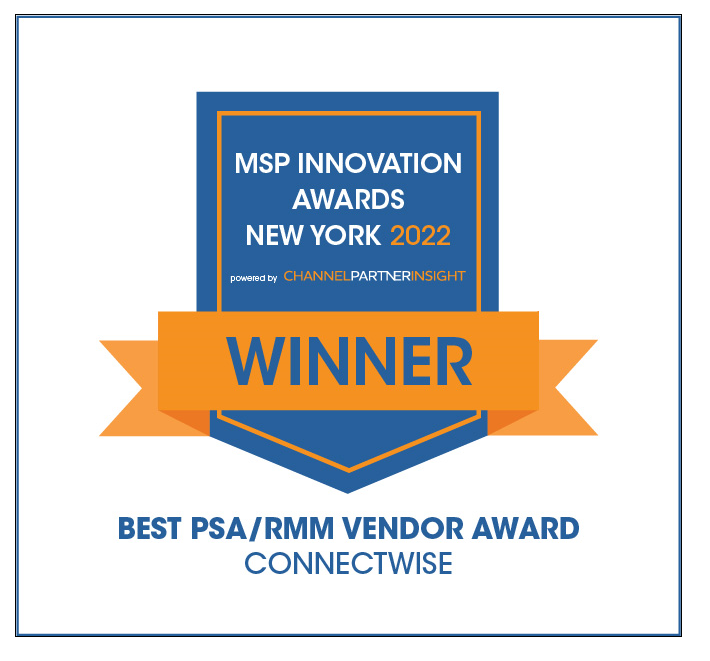SLA and OLA: Understanding the key differences
Ensuring an exceptional customer experience is essential for building and maintaining long-term client partnerships. Although there are a number of opportunities to streamline these relationships, leveraging a service level agreement (SLA) and operational level agreement (OLA) are two of the easiest ways to ensure success.
An SLA serves as a critical component of your contracts, providing clear expectations and guidelines for both your organization and your client. An OLA, on the other hand, helps to manage your own internal team and define clear roles and responsibilities.
Read more below to determine how you should implement an SLA, OLA, or both as part of your business’s daily operations.
What is a SLA?
A service level agreement (SLA) is a formal external agreement between you and your clients. This critical document outlines expectations, clarifies responsibilities, and details the specific services that will be rendered, such as covered devices, scoped hours, and response times. An SLA should address key business requirements while helping to manage client expectations.
The SLA can serve as an evergreen resource for both you and your clients to turn back to for future reference, accountability, and measurement of progress.
Different types of SLAs include:
Client service-level agreements: A customer service-level agreement is between an MSP and an external customer. This type of SLA serves as a negotiated agreement on the services that will be provided and typically includes exact details on expectations, provisions of the service availability, standards for each level of service, roles and responsibilities, and escalation expectations and recommendations.
Internal service-level agreements: An internal service-level agreement is between an organization and an internal customer, which could be another organization, department, or site. For example, an SLA may exist between an organization’s marketing and sales departments.
Multi-level service-level agreements: A multi-level service-level agreement divides the overall agreement into levels that are unique to different customer segments.
Having an SLA in place helps to:
- Facilitate communications and set customer expectations
- Outline procedures to be followed throughout the relationship
- Provide a reference point in case of a question or discrepancy
- Improve overall client service and satisfaction
Overall, an SLA provides accountability and peace of mind to begin a strong relationship with a new client.
What is a OLA?
An Operational Level Agreement (OLA) is an internal agreement that outlines how different departments and teams will support the delivery of services to your clients.
Having an OLA is critical to your overall business success. With a clear OLA, you can ensure the most efficient service for your clients and provide seamless cooperation and collaboration between different teams and departments.
An OLA is created to ensure that all parties support and provide the intended SLA—it informs parties of what to do and when. Key components of this agreement include clearly defining the scope of responsibilities as well as what necessary support and maintenance are needed within the defined boundaries of the SLA.
Having an OLA in place helps to:
- Internally track targets, objectives, and commitments
- Identify key performance indicators to assess overall success
- Streamline internal communications
- Define roles and responsibilities across teams and departments
SLA vs OLA
While both SLAs and OLAs can be used cohesively to provide seamless delivery to your client, there are a few key differences between the two:
SLAs:
- External-facing between the MSP and the client
- Define the level of service expected by the client
- Offer key metrics and KPIs for uptime, response time, resolution time, and availability
- Affects the overall client experience and satisfaction
- Flexible and can be negotiated with your clients based on their unique needs
- Are enforced by the client against the MSP
OLAs:
- Internal-facing between MSP teams and departments
- Provide operational workflows and guidelines for collaboration
- Outline key responsibilities, dependencies, and relationships
- Affect internal operations and daily efficiency
- Keep teams in sync while identifying any constraints
- Determined and managed internally and enforced within the organization
It's important to note that while OLAs and SLAs have their differences, they complement each other in ensuring effective service management. SLAs focus on meeting client expectations and maintaining service quality, while OLAs establish the internal processes and collaboration necessary to deliver on those services.
Overall, it is your team’s job to ensure that both agreements are consistent and well-documented.
How to create effective SLAs and OLAs
Understanding how to establish effective OLAs and SLAs for your team and your clients can help you start every client relationship off on the right foot.
How to write an effective SLA
Effective SLAs protect both parties by ensuring cross-functional alignment, providing accountability for obligations, and giving peace of mind through a business relationship. Because an SLA can be understood as a KPI-driven contract, it’s crucial for you to measure your service-level objectives (SLO) against your SLA.
An SLO is an agreement within an SLA about a specific metric like sales or response time for an outage—these are the individual promises that you’ll make to your client. Any established SLO metrics must be fair to both involved parties—and is typically something within your control and can be collected easily, accurately, and/or automatically.
To write an effective SLA, consider the following steps:
- Define your service metrics. What key performance metrics are relevant to the services provided? This often includes metrics such as response time, resolution time, uptime, and general availability. In partnership with your client, articulate these specific targets—and the appropriate thresholds and benchmarks for each metric.
- Set realistic, measurable goals. Don’t over promise to your clients—that only leads to disappointment and frustration. Instead, set realistic and measurable goals. Ensure that every target outlined in your SLA is achievable and aligned with your team’s capacity and capabilities.
- Outline escalation and resolution procedures. In the event of a service incident or escalation, what steps will be taken by your team, and what steps will be taken by your client? Clearly articulate your expectations to resolve issues—including a discussion on expected response times, escalation points, and communication channels.
- Define service credits and penalties. If an agreed-upon target is not met, what is the consequence? Determining credits and penalties in your agreement ensures the overall quality of the service provided and enforces trust, transparency, and accountability.
- Establish regular reporting. How often will you review the performance and provide reviews? Define the frequency and conduct regular assessments to ensure you’re meeting specific goals and targets.
- Don’t be afraid of revision. SLAs should be revised periodically to keep them relevant and aligned with your client’s changing needs. Continue to update your SLAs based on client feedback, service improvements, or changing scopes.
Measuring Success for SLAs
Measuring the success of your SLA is critical for ongoing growth—both for your business and for your clients. To effectively track and measure success, consider the following elements:
- Regularly monitor performance metrics. As you write an effective SLA and define performance metrics, make sure to regularly monitor and report findings and insights.
- Collect client feedback. Gather feedback from your clients through surveys, interviews, or feedback sessions.
- Review incident and resolution data. Analyze all incident data—including response times, resolution times, and any client feedback.
- Conduct regular SLA reviews: Schedule review meetings with your stakeholders to evaluate overall performance and any opportunities to advance service delivery.
For more tips on creating and optimizing effective SLAs, download our eBook: SLAs: The Foundation for Stronger Customer Relationships.
How to write an OLA
Effective OLAs help to define the validity of SLAs and the relationships and responsibilities among the internal teams to ensure the obligations outlined within the SLA can be fulfilled.
When an MSP has an effective OLA, it leads to streamlined and efficient efforts, greater accountability, optimized services, and more satisfied clients.
To write an effective OLA, consider the following steps:
- Define the scope of work. Before diving into the different roles and responsibilities, ensure clear alignment on the scope of work.
- Define responsible parties and roles. Define the roles and responsibilities of each team or department involved in your client project. List all the job responsibilities, any vendors involved in the process, and expectations for communication and ownership for each.
- Set expectations for response and resolution times. Discuss the expected response times and resolution times for various incidents or client requests. This ensures that your team understands the expectations—and can prioritize and manage their workload accordingly.
- Document workflows and procedures. Create step-by-step workflows and processes for your team when handling various types of incidents, requests, or tasks. As much as possible, ensure that these procedures are well-documented and understandable by everyone involved in the project.
- Establish an escalation process. What occurs if an issue or incident cannot be resolved by the assigned team? Define escalation paths and the criteria for when and how to push incidents or issues to higher-level support or management.
- Regularly review and update OLAs. Just as you will continuously review and update your SLA, conduct consistent reviews of your OLAs as well. Update them as necessary based on any changes to your team’s roles and responsibilities.
Measuring success for OLAs
Your OLA’s success ultimately depends on the efficacy of your internal processes and collaborations within your entire organization. To measure OLA success over time, consider the following elements:
- Meeting timelines and urgency. Measure the time taken to complete tasks or fulfill requests outlined in the OLA. This includes tracking response times, resolution times, and overall cycle times for various operational requirements.
- Assess process and workflow. How do your team members and departments follow the documented workflows and procedures? Are there any deviations or bottlenecks? Identify any opportunities to improve overall efficiency and cohesion across your team.
- Issue escalation and resolution. What is the efficacy of the escalation process and procedure? Track the escalation rates, assessing the overall timeliness and effectiveness of issue resolution.
- Collaboration and communication. Monitor the quality and effectiveness of cross-functional team collaboration. Are there any adjustments that could be made to increase speed and success?
- Process efficiency. What opportunities are available to optimize resources, streamline workflows, and reduce any redundancies or unnecessary steps?
With these points in mind, though, is there more you can do to build and execute your SLAs and OLAs?
Solutions to support your SLAs and OLAs
Prioritizing your SLAs and OLAs can provide a foundation for optimizing the quality, speed, and efficiency of your services, which is critical for long-term business development and success.
For MSPs with numerous clients, managing and tracking OLAs and SLAs can be time-consuming and hard to track. With agreement management in ConnectWise PSA, you can exceed your customers’ expectations by maintaining well documented terms in a centralized location. When leveraged with additional PSA features like help desk and cloud billing, you can connect your business in a single tool.
Start your free demo of ConnectWise PSA today to experience our end-to-end business management solution firsthand.


